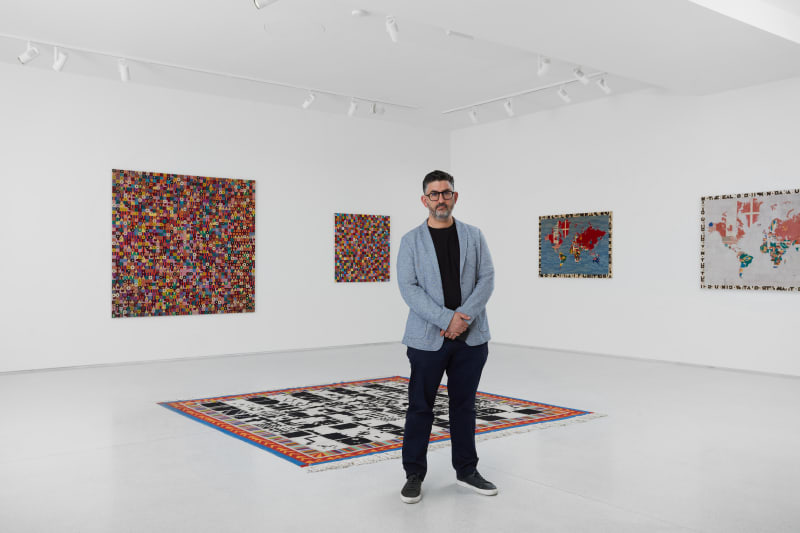Anyone wanting to understand the innovative art of the Italian conceptualist Alighiero Boetti (1940-94) should head to Ben Brown Fine Arts / Claridge’s ArtSpace, where ‘Regola e Regolarsi’ gives them all they need. There are some 80 career-spanning works, informatively presented to demonstrate Boetti’s explorations of serial schemes and systems; his innovative approach to self-portraiture; his use of language; and his way of producing work with the assistance of unknown third parties. I spoke to Mark Godfrey, who curated the Tate’s seminal 2012 survey ‘Alighiero Boetti: Game Plan’ as well as this, the largest subsequent presentation of Boetti in London.
How have you put the show together?
The first room roughly coincides with the world Regola (‘Rules’), and considers the key concepts that Boetti worked with in the first eight years of his practice. It looks quite dry and conceptual, even though it contains a lot of his personal interests. The second part of the show has an explosion of colour and textures, so even though the rules still exist, there is an adjustment to them – Regolarsi means ‘adjustments’. The third space, viewable on request, contains a selection of drawings from his studio. Boetti is celebrated mostly for works operating through some sort of fabrication process. He was, though, the kind of artist who could never stop doing things with his own hands – but he felt that work was very much secret. He would make drawings by experimenting with such techniques as blowing ink, using stamps, or dipping elastic bands in paint and dropping them on sheets of paper. And had his own cosmology of animals which he drew – he liked animals with a great sense of energy and movement.
How does the word square ‘Regola e Regolarsi ’ illustrate Boetti’s approach?
When it came to embroidery he would write the phrases out and send the canvases off to the embroiderers, initially in Afghanistan, then in Peshawar, leaving the individual colour choices to the embroiderers. They were women commissioned by men, so there was an intermediary between Boetti and the embroiderers. That contrasts with most artists in the sixties: they would either have work fabricated by people that they visited a lot, or might have assistants in their studios – but Boetti set up a system of production whereby people unknown to him completed the work. He liked the idea that the final appearance of the work was as much down to their input as his. The union of order and disorder – Regola e Regolarsi – is something Boetti was obsessed by as a good way of making art. In the word square the order is in that it’s a 16 letter phrase that fits perfectly into a square, and in the fact that every letter gets the same amount of space. The disorder is in the way that the three words are run together, and also in the choice and combination of colours not being controlled by him.


